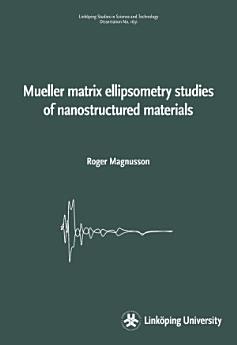Mueller matrix ellipsometry studies of nanostructured materials
À propos de cet e-book
Mueller-matrix ellipsometry has been used to extract optical and structural properties of nanostructured materials. Mueller-matrix ellipsometry is an excellent tool for studying the interaction between nanostructures and light. It is a non-destructive method and provides a complete description of the polarizing properties of a sample and allows for determination of structural parameters.
Three types of nanostructures have been studied. The rst is an array of carbon nanobers grown on a conducting substrate. Detailed information on physical symmetries and band structure of the material were determined. Furthermore, changes in its optical properties when the individual nanobers were electromechanically bent to alter the periodicity of the photonic crystal were studied. The second type of nanostructure studied is bioinspired lms with nanospirals of InxAl1–xN which reflect light with a high degree of circular polarization in a narrow spectral band. These nanostructures were grown under controlled conditions to form columnar structures with an internally graded refractive index responsible for the ability to reflect circularly polarized light. Finally, angle-dependent Mueller matrices were recorded of natural nanostructures in C. aurata with the objective to refine the methodology for structural analysis. A Cloude sum decomposition was applied and a more stable regression-based decomposition was developed for deepened analysis of these depolarizing Mueller matrices. It was found that reflection at near-normal incidence from C. aurata can be described as a sum reflection o a mirror and a left-handed circular polarizer. At oblique incidence the description becomes more complex and involves additional optical components.







